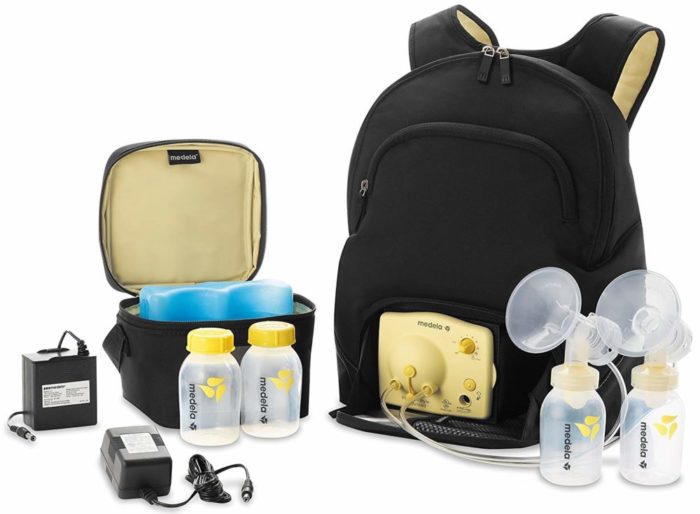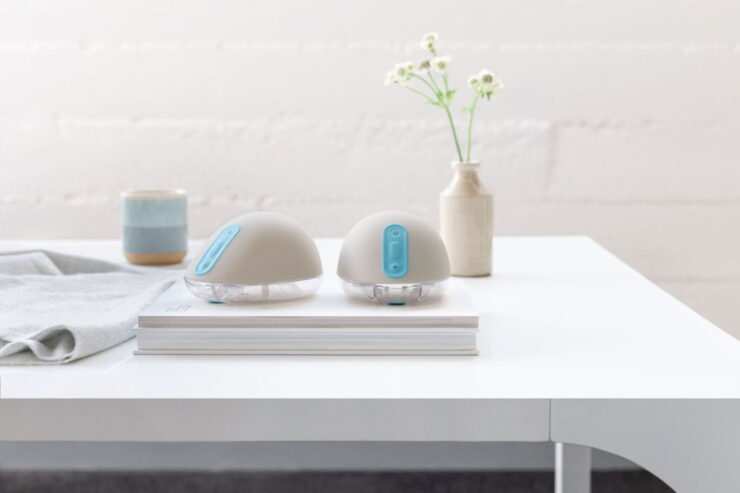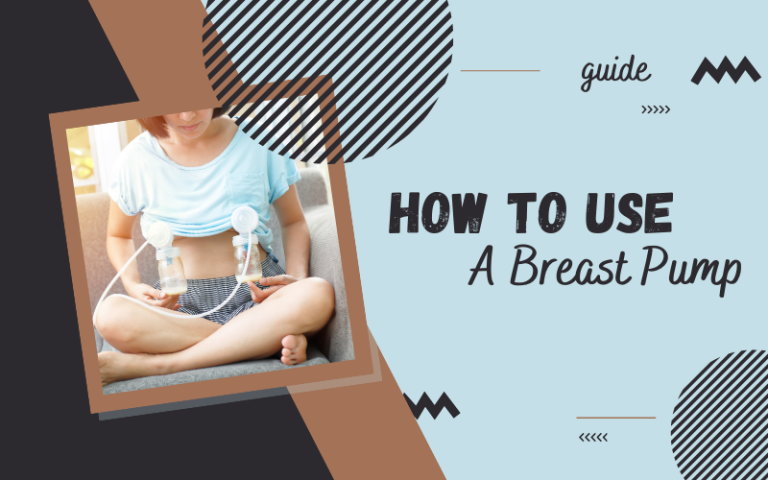As a busy mom, you may at one point need to learn how to use a breast pump.
In fact, once you have bought your breast pump, the journey has just begun! There are some mothers who find it pure agony to use a breast pump.
However, if you have a good pump and have a fast ejection reflex (let-down), the whole pumping process should not take you more than 15 minutes to empty both breasts using a double pump.
Below are the following steps to use a breast pump generally:
How to Use a Breast Pump in 13 Steps

Before Pumping [What to do in six steps]
- Wash your hands thoroughly.
- Make yourself comfortable by supporting your back and shoulders.
- Layout everything you need within reach especially if you are using an electric pump
- Apply warm compresses before pumping or gently massage your breasts, think of your baby or imagine your baby in your arms. This can help stimulate the release of hormones that allows your milk to flow easily which will make pumping a success.
- The more relaxed you are, the more milk you will be able to pump. Some of the ways are to listen to relaxing music, audiotapes, watching television, reading a book or apply some familiar baby powder.
- Read the instructions that accompany your pump and milk collection kit before you begin pumping.
During Pumping
- Center the breast flange over your nipple
- Once you have started the pump, your nipple should begin to move in and out without rubbing against the sides of the flange. If the breast flange feels too tight, try on a larger flange.
- Continue to massage or gently squeeze your breasts while you are pumping. You may feel like a cow at this point but it tends to expel more of the milk out in greater quantities.
- Move your breasts in various directions while pumping to pull more milk out of the many milk ducts.
- Another key to stimulate and maintain a good milk supply is to express your breast milk with frequency. Additionally, your pumping routine should simulate your baby’s feeding schedule as closely as possible.
- If you are the mother of a premature or hospitalized infant, you will need to pump every 3-4 hours (even at night time) until your baby is ready to begin breastfeeding.
- If your pump’s suction can be adjusted, always start at the lowest setting before gradually increasing the suction to the highest level at which you are comfortable. On the other hand, if you experience any pain, decrease the suction level until it feels more comfortable.
Length of Pumping
- For a single milk collection kit, pump about 15-20 minutes per breast. Switch to your other breast when your milk flow decreases. If you are using a double milk collection kit, pump for 10-15 minutes.
- Continue to pump even as your milk flow slows down. This is because this can happen several times before your breasts are fully drained.
- If you are using a manually operated breast pump, begin with quick, short squeezes to simulate the way a baby begins the feeding. Once your let-down reflex occurs and the milk is flowing freely, the transition to a squeeze-and-hold rhythm as it can be more effective and less tiring.
After Pumping
- (1) After each use, completely disassemble your milk collection kit and wash all the parts that come into contact with your milk in hot, soapy water.
- (2) By rinsing them with hot water, you can rid any contamination.
- (3) Allow all the parts to dry.
- (4) Your milk collection kit does not need to be sterilized unless your health care provider or hospital policy clearly state or recommend it.
- (5) To sanitize the product, always follow the instructions that come with your milk collection kit as some may differ.
What Type of Breast Pump Should I Use?

If you still don’t have a breast pump, you should consider the different types available and see which one suits you best.
There are only three types on the market, manual, single and double electric. To make expressing milk easy, you need to first decide on which one will suit your routine.
If you are planning to pump regularly (and maybe in-between working hours), you may want to choose a double or single electric breast pump.
They are faster, more flexible and are much more powerful compared to a manual breast pump. The advantage of these features is that they speed up the pumping exercise, which you’ll need as a busy momma.
However, if you feel you’ll only need to pump occasionally, then you can make do with a manual breast pump.
The downside is that you’ll spend more time pumping and at some point may feel the stress isn’t worth it. They are cheaper than electric breast pumps but requires more work.
Instead of looking at it in terms of price or how much work will be required, you can consider which one will be better for your baby.
If you are going to stay away from your baby for long and you don’t have much time to express milk, go for the electric pump.
But be ready to pay more for it.
However, if you’ll only be needing a small amount of milk each time, then a manual pump should be good enough.
Which Bottle Should I Use?
This is entirely dependent on your baby and how much milk you plan to express each time. Also, you may need more than just one bottle if you want to store milk too!
If you have a breastfed baby, you want to choose the bottle that’s suitable for him/her. Medela makes great preemie bottles so you should check them out if that’s the case.
However, for general applications, Dr. Browns and Philips have great bottles. In addition, most of their bottles are anti-colic so they can also prevent spit-up and colic.
Comotomo makes good bottles too, however, their bottles are usually smaller unless you look for the bigger ones.
How Much Do You Have to Pump?
This depends on a few criteria, namely:
- Age of your baby
- Weight of your baby
- Length of time since your breasts were last emptied
- Time of the day
- Mother’s stress level
- How established your milk supply is
Do keep in mind that a vigorously breastfeeding baby can always get more milk from you than the very best breast pump on earth!
Concluding Remarks
For first-time mothers, don’t get discouraged if you get very little milk the first time you pump. The effectiveness of pumping improves with practice.
As a matter of fact, you can always ask for help from other mothers, a midwife, doula, public health nurse, lactation specialist, or breast pump manufacturers.
Give yourself time to learn this new skill. Don’t wait until you get back to work before you learn to pump.
That would only add to your stress level and make pumping an arduous task.
By planning ahead and learning in advance, your experience will be definitely more positive and enjoyable.
And if you do travel a lot, there are many breast pumps suitable for traveling on the market.

